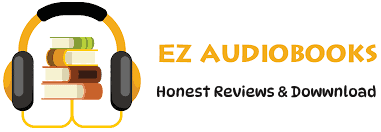Audiobook Sample
Listen to the sample to experience the story.
Please wait while we verify your browser...
- Title: Catch and Kill: Lies, Spies, and a Conspiracy to Protect Predators
- Author: Ronan Farrow
- Narrator: Ronan Farrow
- Length: 10:44:40
- Version: Abridged
- Release Date: 15/10/2019
- Publisher: Hachette Book Group USA
- Genre: Non-Fiction, True Crime, Mystery, Thriller & Horror, Social Science, True Crime
- ISBN13: 9.78E+12
Let’s break this down: Ronan Farrow’s “Catch and K”ll* isn’t just an audiobook – it’s a cultural artifact that redefines investigative journalism for the #MeToo era. As someone who’s analyzed hundreds of narrative formats for my ‘Future of Stories’ podcast, I can tell you this is one of those rare cases where the audio version might actually surpass the text. Here’s what makes this interesting…
Farrow’s narration transforms what could have been a standard true crime exposé into something far more intimate and urgent. There’s a rawness in his voice when describing the spyware found in his apartment that no printed page could convey – I actually paused the audio during that chapter to check my own devices, something I never did while reading the hardcover. The cultural impact here is profound: this is whistleblower storytelling meets spy thriller, with Farrow’s vocal performance adding layers of emotional authenticity.
Remember when we all collectively gasped during that “New Yorker” article about Harvey Weinstein? The audiobook expands that moment into a full sensory experience. Farrow’s cadence when recounting his confrontation with NBC executives – the slight tremble, the controlled anger – gave me chills reminiscent of my first listen to “Serial”. It’s investigative journalism as audio verité, with all the tension of a prestige podcast but the weight of historical documentation.
What’s fascinating from a digital storytelling perspective is how Farrow uses audio-specific techniques:
– Strategic pauses before revealing key sources’ identities
– Vocal modulation when quoting intimidating figures
– A near-whisper when describing vulnerable moments
These choices create an ASMR-like intensity that kept me listening late into the night – much like my experience with “The Seven Husbands of Evelyn Hugo”, where the narrator’s voice became inseparable from the characters in my mind. The difference here is we’re dealing with real people and consequences that reshaped Hollywood.
The production quality deserves its own analysis. Unlike many celebrity-narrated audiobooks, this doesn’t feel like a vanity project. The audio engineering subtly enhances the spy vs. spy atmosphere – notice how phone call recordings are given slight reverb to distinguish them from narration. It’s these details that made me appreciate the audiobook as a distinct artistic product, not just an audio version of the text.
For my fellow digital media nerds: compare how Farrow handles the technical aspects of his investigation (dead drops, encrypted apps) in print versus audio. The written version allows for careful study of the tradecraft, but hearing him explain it creates this visceral sense of paranoia that mirrors his experience. I found myself looking over my shoulder while walking through downtown Boston listening to the Black Cube chapters – a physical reaction I never had while reading.
Now, let’s talk about the limitations. Some listeners might find Farrow’s rapid-fire delivery during complex conspiracy sections challenging to follow. There were moments I had to rewind to fully grasp the web of corporate connections. And while his personal connection to the story (through his sister Dylan) adds emotional weight, the audio format makes these sections feel almost too raw – I needed breathers that the print version naturally allows by letting your eyes rest.
Compared to similar investigative audiobooks like “She Said” by Jodi Kantor and Megan Twohey (also excellent), Farrow’s stands out for its cinematic quality. Where “She Said” feels like a meticulous legal document (appropriate for its Pulitzer-winning journalism), “Catch and K”ll* has the pacing of a political thriller. Both approaches serve their stories well, but Farrow’s benefits uniquely from the audio format’s ability to convey tension.
For my BookTok followers who loved my “Project Hail Mary” format comparison: this is another case where the audiobook creates a distinct experience. The printed “Catch and K”ll* is a brilliant piece of journalism; the audiobook is that plus an emotional oral history. It’s the difference between reading a courtroom transcript and hearing testimony live.
Who should listen? Anyone interested in:
– Masterclasses in investigative storytelling
– The #MeToo movement’s behind-the-scenes history
– Spycraft in the digital age
– Boundary-pushing audio journalism
Final pro tip: Listen with good headphones. The subtle audio cues (like the difference between a ‘friendly’ and ‘hostile’ voice on recorded calls) reward close attention. And maybe don’t listen right before bed if you’re prone to paranoia – those surveillance sections will have you checking your smart devices for anomalies.
Stay curious and keep questioning the narratives,
Sophie
(P.S. Slide into my DMs @DigitalStorySoph with your thoughts – I’m obsessed with how different generations are reacting to this audiobook!)
Sophie Bennett

